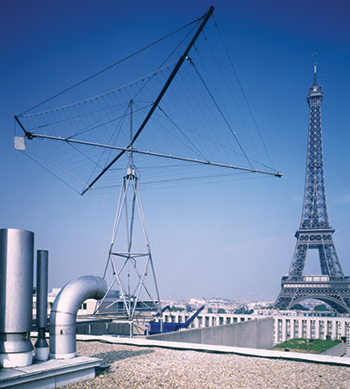Case Study: Antenna Splice Plates and Cross Members Provide Electrical Insulation

 Rotatable log-periodic antennas produced by Andrew Canada, Inc., Whitby, Ontario are used for embassy to embassy transmissions around the world. Rigid high strength fiberglass components provide electrical insulation. Round tubes are used as cross members to support wires at the top of the antenna and a custom designed angle and splice plates are used to connect sections of the tripod antenna leg.
Rotatable log-periodic antennas produced by Andrew Canada, Inc., Whitby, Ontario are used for embassy to embassy transmissions around the world. Rigid high strength fiberglass components provide electrical insulation. Round tubes are used as cross members to support wires at the top of the antenna and a custom designed angle and splice plates are used to connect sections of the tripod antenna leg.
Andrew Canada produces both a full tower size and a compact roof size antenna for medium and long range communications. The roof top antenna provides both private and conventional organizations efficient directed communications capability. The cross members are pultruded round tubes joined into 56 foot long sections. Manufactured of fiberglass reinforced vinyl ester with fire retardant, they provide a lightweight structure with the structural integrity to withstand 100 mph wind and 50 mph wind with 1/2" ice.
| TECHNICAL DATA |
|---|
| Product: Antenna Splice Plates and Cross Members |
| Process: Pultrusion |
| Materials: Fiberglass reinforced vinyl ester |
| Sizes: U-shaped angle: 2.01" x 1.43" x 2.01" x .38" thick Splice plate: 1.50" x .25" Round tube: 3" x 1/4", 4" x 1/4" |
| For: Andrew Canada, Inc. |
Specially designed fiberglass components provide electrical insulation for the full size towers as well. A custom designed U-shaped angle and two facing splice plates form the insulators connecting sections of the tripod antenna leg. They have superior dielectric strength and do not interfere with signals. The splice plates had to be designed to maintain structural integrity after drilling and countersinking six holes on each side.